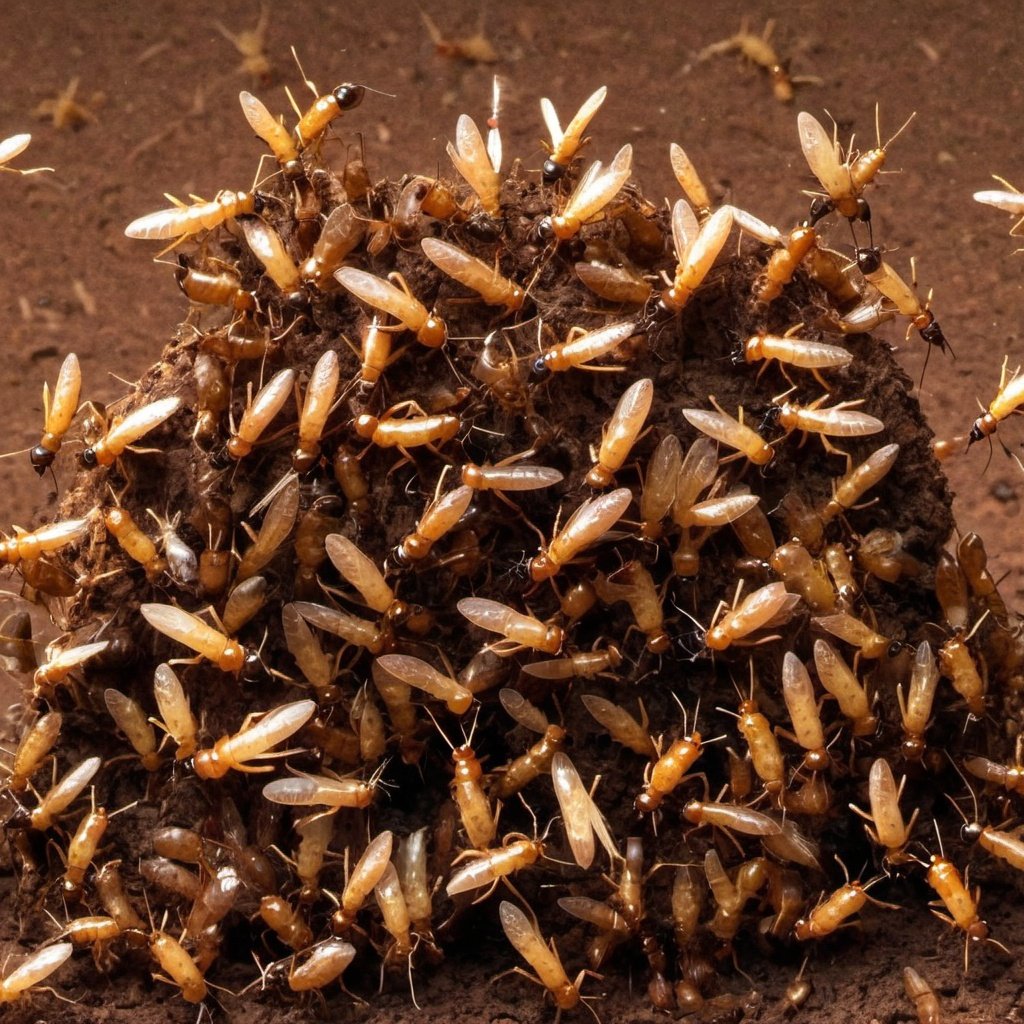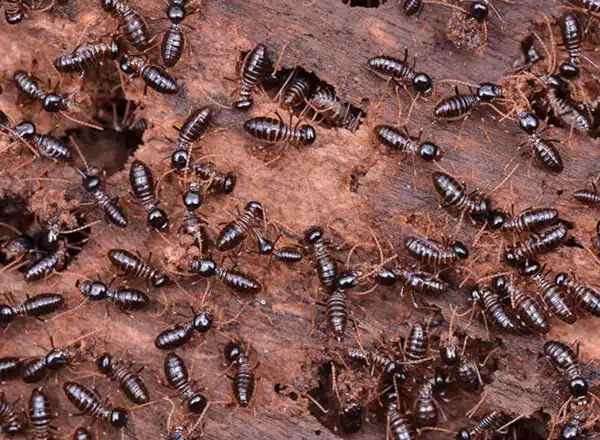Insects eat a wide variety of food sources. Many insects are predators, and feed on other insects. Many insects are plant eaters, and feed on leaves and other portions of the plant. Still other insects choose to feed on high carbohydrate food sources such as nectar or honeydew. The termite feeds upon the cellulose found inside of wood. How do termites digest wood? Termites have special enzymes in their digestive track that break down the cellulose in word to create energy for them.
Wood is created from two substances. These two substances are cellulose and lignin. Cellulose is the part of the wood that termites can break down and create energy out of. Wood is the only food source that termites can eat. Because of this, termites forge extensively and must find new sources all the time. These insects are useful in nature at breaking down dead and rotting wood found in most forests. They become pests when they find human built structures made of wood and try to use them as a food source.
TERMITE DIGESTION
The digestive system of a termite has three parts. These parts are the fore gut, the mid gut and the hind gut. The fore gut is used primarily in the physical breakdown of the plant fibers using crops and a muscular gizzard. The mid gut is where of the digestive enzymes are applied to the food. The hind gut is where those enzymes actually digest the food and nutrients are absorbed. When a termite molts it will actually lose a portion of its hind gut. In order to replenish its gut bacteria, Young termites will consume the waste of adult termites. Your Tulsa exterminator can help.
One of the problems associated with breaking down wood as food, is the fact that you end up with a nitrogen deficit nitrogen. Nitrogen is an important part of the food chain and is needed for termites to survive. There are special enzymes in the gut of a termite that will actually break down its urine and create more nitrogen to make up for that lack. Listed below is a table that shows each bacterium used in the digestion process and its role.
| Domain | Genus,Species | Brief Descriptions/Functions of Microbes |
| Bacteria | Treponema | Swim freely in the gut or attached to the protist; acetogenic, carry out acetogenesis |
| Bacteroides, Bacteroides termitidis | Fermentative, acidogenic; increase N source by recycling uric acid waste | |
| Desulfovibrio | Sulfate-reducing bacteria; transfer hydrogen as H₂ donor | |
| Citrobacter, Citrobacter freundii, Enterobacter, Enterobacter agglomerans | Nitrogen-fixing bacteria | |
| Enterococcus, Lactococcus | Lactic acid bacteria | |
| Archaea | Methanobrevibacter | Metanogens, associated with protists as symbionts; carry out metanogenesis and produce methane |
| Protists | Trichonympha, Mixotricha, Dinenympha, Euconomympha | Degrade endocytosed cellulose and produce H₂ plus CO₂. Anaerobic, occur on mitochondira in the cells |
Information provided by MicrobeWiki
LIFECYCLE
Termites have an incomplete metamorphosis. This means that they are born from eggs, hatch as larva, molt into nymphs and finally growing two full grown adults. Nymphs are a smaller version of adult termites. They will grow until their exoskeleton can grow no more, and then they will molt or remove their outer skin. Nymphs will molt multiple times depending upon their species.
Termites are a hive or eusocial insect. They divide their labor up into three distinct castes. The worker caste is full of exclusively female workers. These individuals do the labor of maintaining the colony. They forage for food, feed the young, maintain the eggs and feed the soldiers and reproductives. The soldiers protect the colony. They have large heads with large mandibles used to fight off predators. The reproductive’s, or alates, Leave the hive to create new colonies. Contact your Tulsa pest control company for help in eliminating these pests.
TERMITES AND MOISTURE
Dehydration is a constant threat to these insects. Termites are found underground in order to maintain the humidity that they need to survive. If they are above ground too long, they will dry out and die. In order to forage for food, they will build mud tubes to climb up the sides of structures and trees. This allows them to take the humid air from underground above the surface with them. Call your Oklahoma exterminator for more information.
Mud tubes are a common sign that your home or business has termites. These tubes will house thousands of termites as they carry food up and down the tube to the colony. They will feed on the wood flooring of the tube as it stretches across a piece of wood. Because of this, the wooden galleys are usually not visible unless the termites have stopped feeding on that area, and the tube has fallen off.
FORMOSAN TERMITES
Formosan termites are some of the most feared insects in nature. These termites are currently untreatable. The reason for their formability is in their numbers. Normal underground termites such as the eastern underground termite have colonies with populations in the hundreds of thousands. Formosan termites have populations easily in the millions. These termites are an invasive species from the Formosan Islands in the south pacific.
Currently, these termites are not found in Oklahoma. They are only in southern states that border the ocean. It is likely that these termites require the tropical climates that these states provide. Formosan termites also have the ability to create nests from a substance known as carton. This is a building material comprised of dung, wood and saliva. Because of this, this termites can create arial colonies. These colonies have no connection to the ground.
HOW TO ELIMINATE TERMITES FROM YOUR HOME
If you believe that you have a termite problem, then it is time to contact an experienced Oklahoma pest control company. TermMax Pest Control is a Broken Arrow based company that specialized in all types of pest control work, including termites. We service the greater Tulsa area including Broken Arrow, Jenks, Coweta, Claremore, Catoosa, Bixby, Sapulpa, Sand Springs, Pratville, Berryhill, Owasso, Turley and much more. Call us today for a free estimate. We are here to help!



